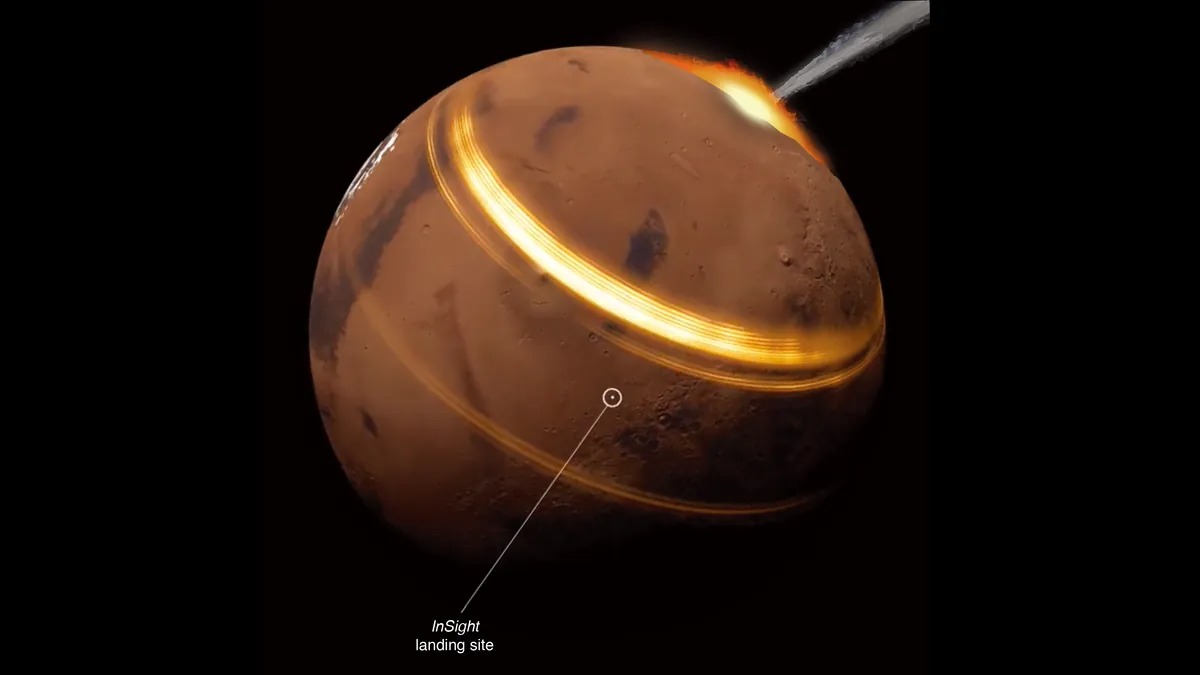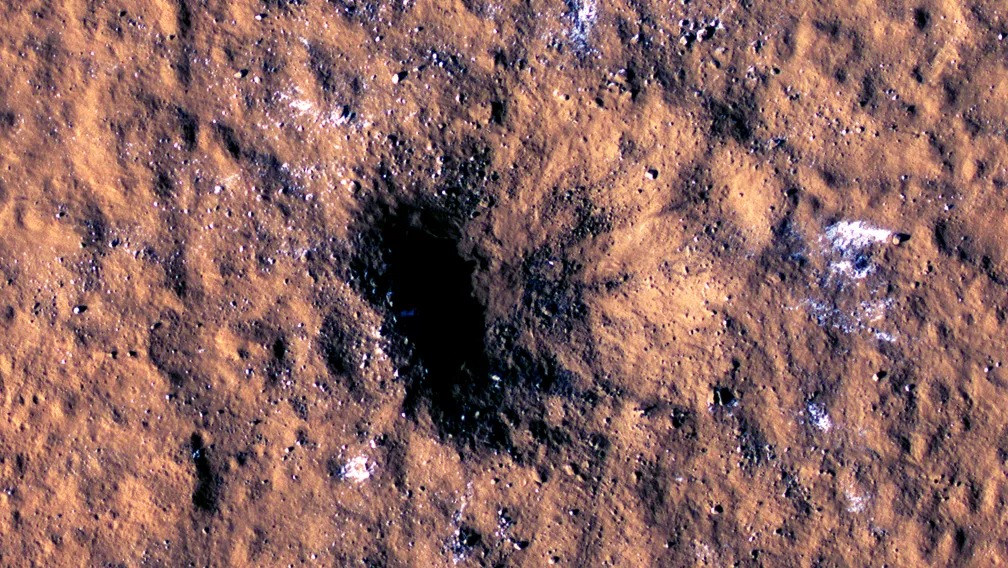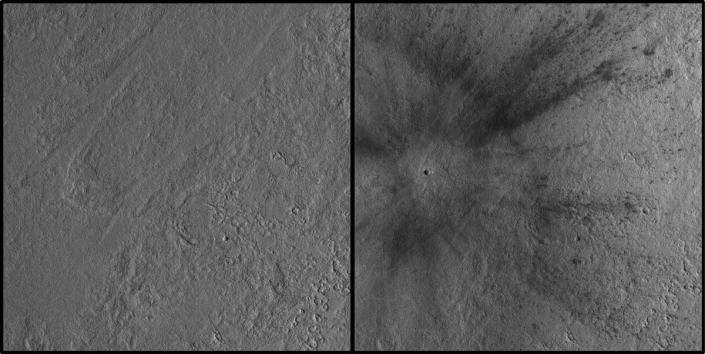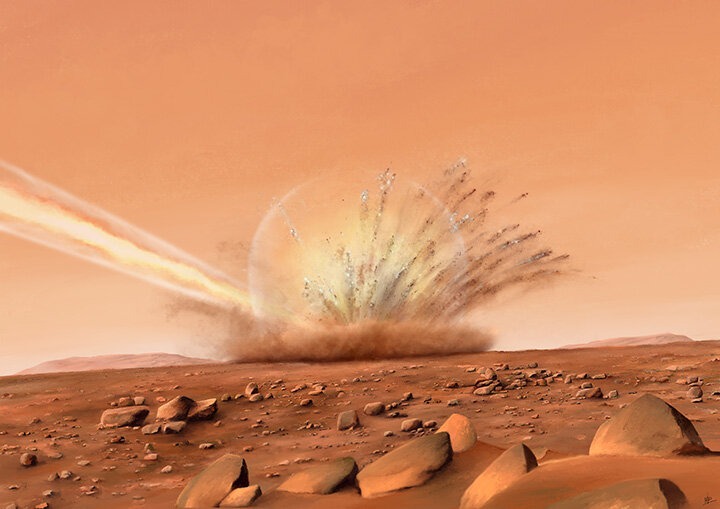Researchers working at the ETH Zurich Earthquake Service analyzed measurements taken by the NASA InSight mission seismometer on Mars. For almost three years, the only seismic waves it detected were from the depths of the planet. However, the researchers were always hoping for an event that would also cause waves to spread across the surface. Their expectation was rewarded on December 24, 2021, when a meteorite collided with Mars and caused the long-awaited type of surface waves.

Atypical characteristics in the earthquake indications led researchers to suspect that its source was near the surface. Therefore, they sent the Mars Reconnaissance Orbiter to the approximate crash site. The images showed a large impact crater about 3,500 kilometers from InSight. It was the first recorded powerful impact from a meteorite crash on Mars.

“We thought that a crater of this size could form somewhere on the planet every few decades, maybe once in a generation. When we witnessed this event, it was a real scientific gift,” said Ingrid Daubar, head of InSight impact research and a planetary scientist at Brown University.

The crater itself extends about 150 meters, which is compared to two city blocks. Scientists calculated that the width of the asteroid that crashed into the Red Planet was 16-12 meters. Meteorites of this size do not pose a threat to Earth, because they simply burn up in the atmosphere without reaching the surface. But the thin atmosphere of Mars weakly protects the surface. The meteorite went deep enough under the surface, even threw out pieces of rocks and frozen ice the size of a large boulder. The scientist also noted that the resulting crater is 10 times larger than the size of others, usually looking just spots in photos from MRO.

Studying the preliminary data, the InSight team announced four cases of meteorite falls on the Red Planet. Each of them is associated with a fresh crater created in 2020 and 2021. The results of the exposure are described in two articles published in the journal Science.
New discoveries may be the last published in InSight before the mission completion announcement. Due to the accumulation of dust on the solar panels, the lander is not able to maintain a stable voltage due to the depletion of batteries, so the seismometer monitors only eight hours every four Martian days.
Earlier we reported on how an extremely slow fireball puzzled astronomers.
Follow us on Twitter to get the most interesting space news in time
https://twitter.com/ust_magazine

